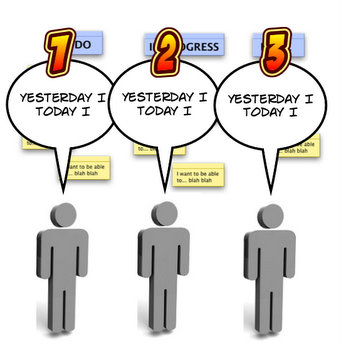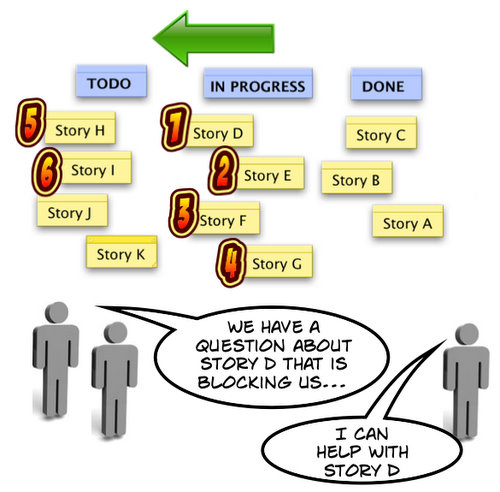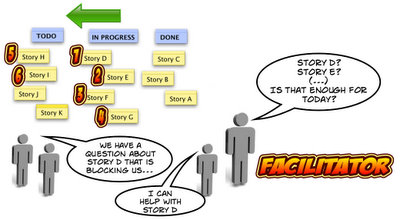Is your stand-up meeting boring? Try the "Walk the Wall" Stand-Up
Stand-up Meetings are a simple, yet effective, way of getting teams to communicate, commit to short term goals and solve problems. There is a proposed format for stand-up meetings which suggests that each team member should provide answers to the following three questions:
- What did you do yesterday?
- What will you do today?
- Are there any impediments in your way?
Have you ever done that and eventually it turned out to get pretty booooooring? I have… Countless times…
Yesterday/Today Stand-Up Meeting (Traditional Proposed Format)
The Yesterday/Today format is a good way to start with, do not get me wrong. I think it's very important for teams that are not used to communicating daily to start with that format. I just think that we should always look for improvements as opposed to just following a pre-determined format... Recently we have been trying something a little bit different and it turned out to be much more effective, I'll explain why. Jason Marcotte coined the term as the Walk the Wall Stand-Up Meeting, I quite liked it.
Basically the sequence of the stand-up meeting is determined by our Story Wall. Each item on the wall gets discussed taking into account the 3 questions mentioned before. Martin Fowler reminds us on his post to "Focus on the Backlog" and this is what this new format is all about:
Walk the Wall Stand-Up Meeting
Here are some of the issues that we are addressing by doing the Walk the Wall Stand-Up.
Monologue/Soliloquy
During the Yesterday/Today Stand-Up we noticed that each team member ended up talking alone and in sequence, usually there were no discussions or quick Q&A. That defeats one of the main purposes of the stand-up, which is communicating. I found a word that describes what we were experiencing: Soliloquy.
Walking the wall allows more than one team member to talk about something, e.g.: explain what they were working on yesterday. It could be that they were actually pairing on that particular item and have similar things to say about it. It also allows people to talk to each other about a particular item (Story, Task or anything on the wall) that is relevant to the entire team. After implementing this we had developers/ba's/testers talking more about a particular item.
But...
Keep an eye on the quiet members of your team... One of the good things about the Yesterday/Today stand-up is that everyone gets to say something, which empowers and therefore motivates them. The facilitator should perhaps ask direct questions sometimes.
Means to an End - Tasks/Achievements
The three questions above suggest that each member has to explain “what they did” as opposed to “what they achieved”. This leads people into explaining the “tasks” that they executed, as opposed to “goals” that they achieved. E.g.: “Yesterday I went to meeting A and I wrote document B and I paired with John on story D”. There's a lot missing there:
- What was achieved?
- Do you need anything from anyone here in order to proceed?
- Is this harder/easier than what you thought? Can someone else help?
We see those discussions happening when it's focused on the stories. It is easier and more likely that someone will mention that "In order for me to finish Story A I need help from a BA" for example.
Facilitator
We also learnt that it helps to have a facilitator during the the stand-up just like we do with retrospectives.
Walk the Wall Stand-Up Meeting with Facilitator
But...
- It is not a micro-management status update when the manager asks everyone what they are doing and how long it's going to take so that he can update his Gantt Chart.
- Rotate the facilitator


